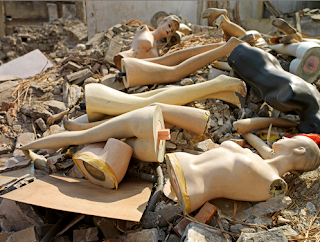CLUSTER. ---------------------
what noise?<<<<
------------------- GRANULAR SYNTHESIS
CCCCCCCCCCCCCCCCCCCCCCCCCCCCCCCCCCCCCCCCCCCCCCCCCCCCCCCCCCCCCCCCCCCCCCCCCCCCCCCCCCCCCCCCCCCCCCCCCCCCCCCCCCCCCCCCCCCCCCCCCCCCCCCCCCCCCCCCCCCCCCCCCCCCCCCCCCCCCCCCCCCCCCCCCCCCCCCCCCCCCCCCCCCCCCCCCCCCCCCCCCCCCCCCCCCCCCCCCCCCCCCCCCCCCCCCCCCCCCCCCCCCCCCCCCCCCCCCCCCCCCCCCCCCCCCCCCCCCCCCCCCCCCCCCCCCCCCCCCCCCCCCCCCCCCCCCCCCCCCCCCCCCCCCCCCCCCCCCCCCCCCCCCCCCCCCCCCCCCCCCCCCCCCCCCCCCCCCCCCCCCCCCCCCCCCCCCCCCCCCCCCCCCCCCCCCCCCCCCCCCCCCCCCCCCCCCCCCCCCCCCCCCCCCCCCCCCCCCCCCCCCCCCCCCCCCCCCCCCCCCCCCCC
TTTTTTTTTTTTTTTTTTTTTTTTTTTTTTTTTTTTTTTTTTTTTTTTTTTTTTTTTTTTTTTTTTTTTTTTTTTTTTTTTTTTTTTTTTTTTTTTTTTTTTTTTTTTTTTTTTTTTTTTTTTTTTTTTTTTTTTTTTTTTTTTTTTTTTTTTTTTTTTTTTTTTTTTTTTTTTTTTTTTTTTTTTTTTTTTTTTTTTTTTTTTTTTTTTTTTTTTTTTTTTTTTTTTTTTTTTTTTTTTTTTTTTTTTTTTTTTTTTTTTTTTTTTTTTTTTTTTTTTTTTTTTTTTTTTTTTTTTTTTTTTTTTTTTTTTTTTTTTTTTTTTTTTTTTTTTTTTTTTTTTTTTTTTTTTTTTTTTTTTTTTTTTTTTTTTTTTTTTTTTTTTTTTTTTTTTTTTTTTTTTTTTTTTTTTTTTTTTTTTTTTTTTTTTTTTTTTTTTTTTTTTTTTTTTTTTTTTTTTTTTTTTTTTTTTTTTTTTTTTTTTTTTTTTTTTTTTTTTTTTTTTTTTTTTTTTTTTTTTTTTTTTTTTTTTTTTTTTTTTTTTTTTTTTTTTTTTTTTTTTTTTTTTTTTTTTTTTTTTTTTTTTTTTTTTTTTTTTTTTTTTTTTTTTTTTTTTTTTTTTTTTTTTTTTTTTTTTTTTTTTTTTTTT
ZEE -------------------------------------------
----------------------------- SECTOR 2c
_
.-. / \ _
^^ / \ /^./\__ _/ \
_ .--'\/\_ \__/. \ / \ ^^ ___
/ \_ _/ ^ \/ __ :' /\/\ /\ __/ \
/ \ / .' _/ / \ ^ / \/ \/ .`'\_/\
/\/\ /\/ :' __ ^/ ^/ `--./.' ^ `-.\ _ _:\ _
/ \/ \ _/ \-' __/.' ^ _ \_ .'\ _/ \ . __/ \
/\ .- `. \/ \ / -. _/ \ -. `_/ \ / `._/ ^ \
/ `-.__ ^ / .-'.--' . / `--./ .-' `-. `-. `. - `.
@/ `. / / `-. / .-' / . .' \ \ \ .- \%
@(88%@)@%% @)&@&(88&@.-_=_-=_-=_-=_-=_.8@% &@&&8(8%@%8)(8@%8 8%@)%
@88:::&(&8&&8::JGS:&`.~-_~~-~~_~-~_~-~~=.'@(&%::::%@8&8)::&#@8::::
`::::::8%@@%:::::@%&8:`.=~~-.~~-.~~=..~'8::::::::&@8:::::&8::::::'
`::::::::::::::::::::::::::::::::::::::::::::::::::::::::::::::'
...........................................................



